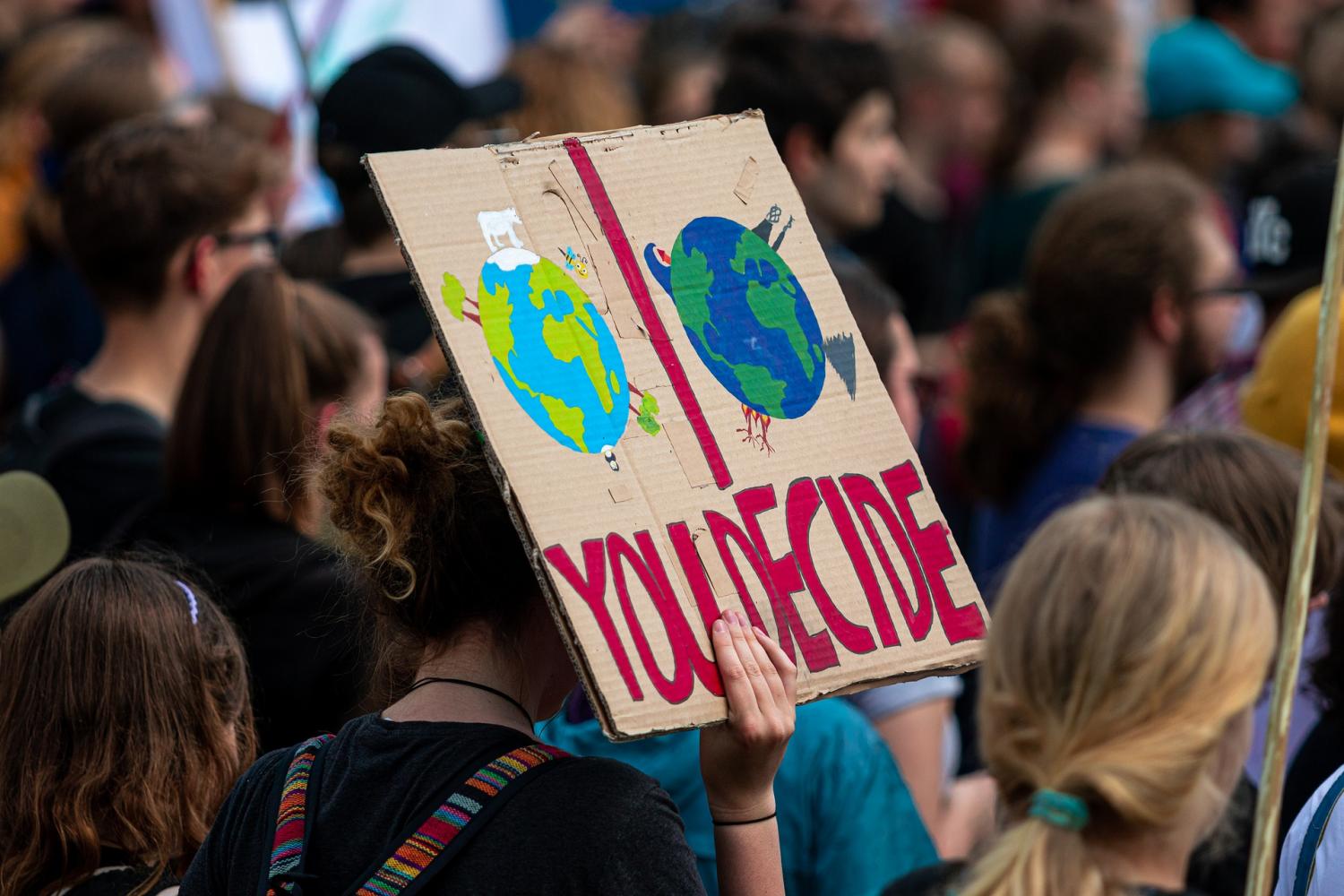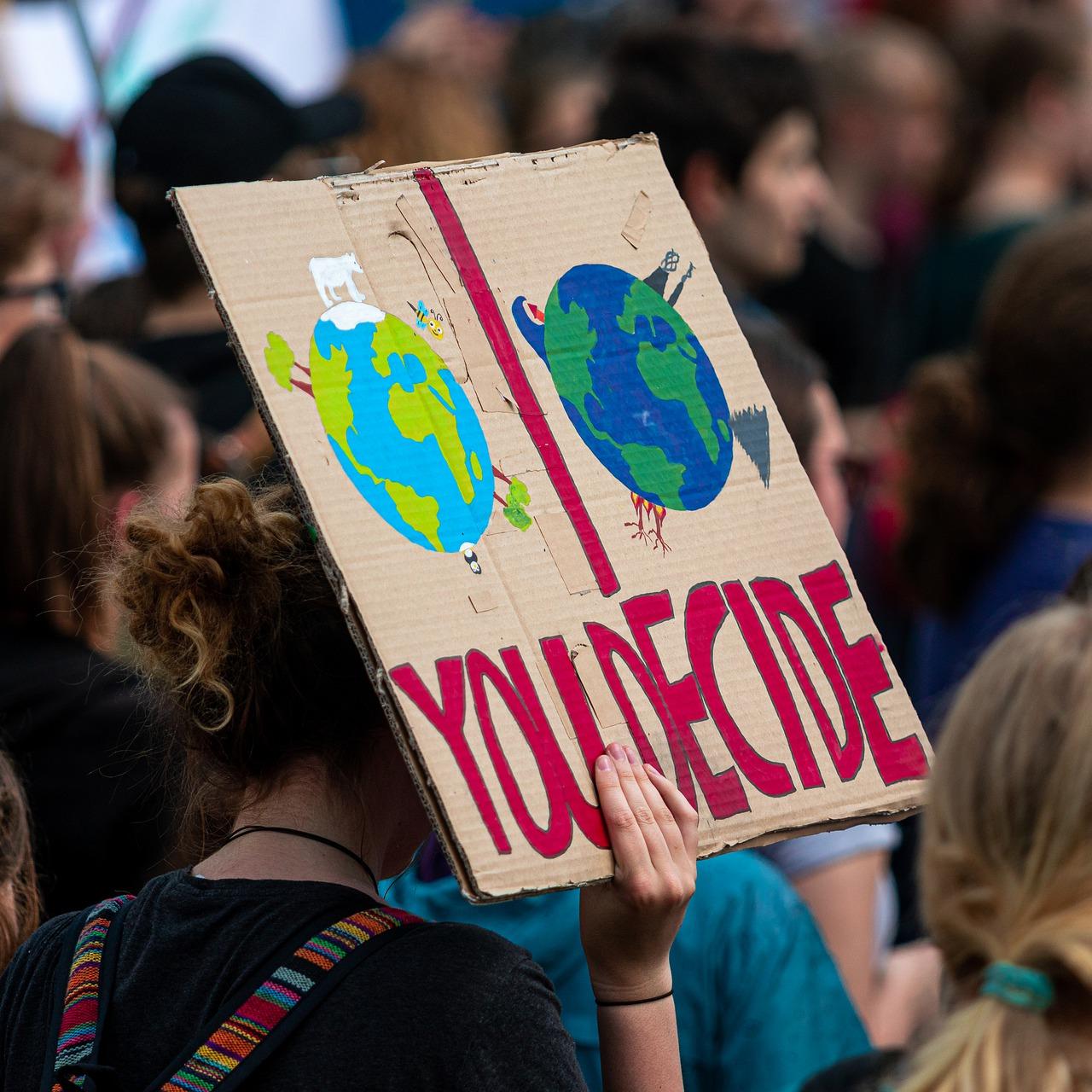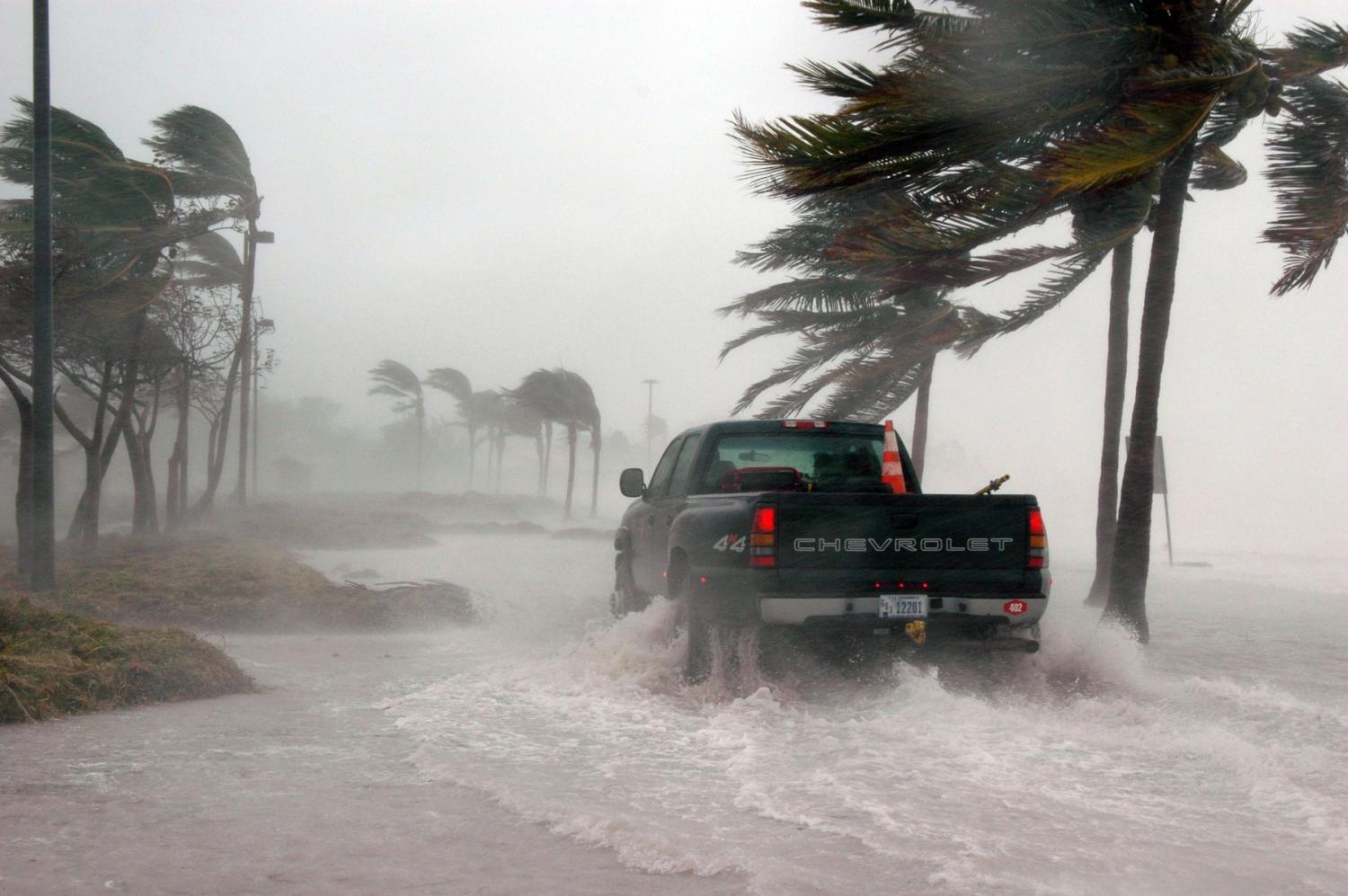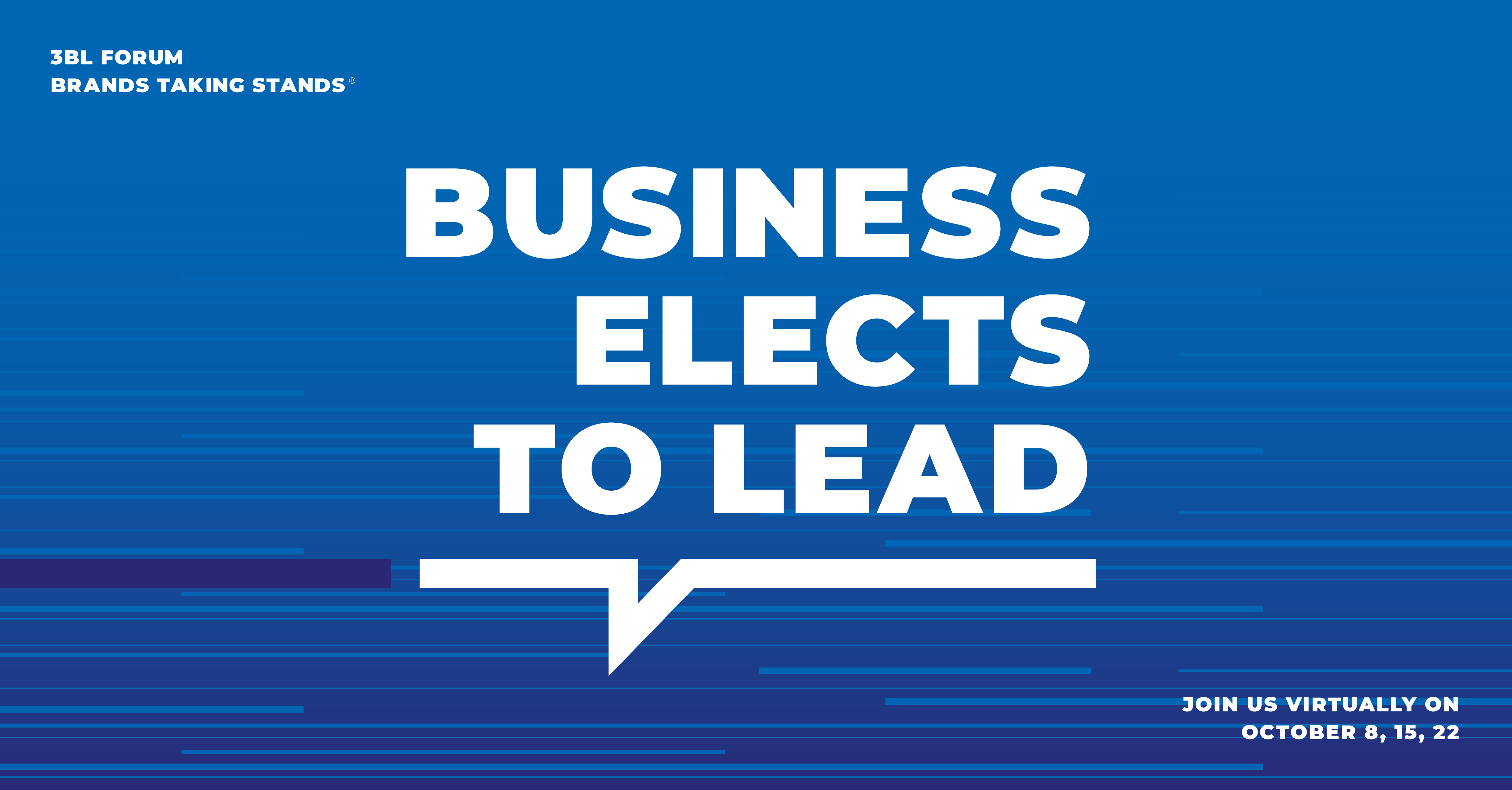World Bank Called Out for Continued Investments in Fossil Fuels


The World Bank has come under fire by a leading European NGO over some of its loans and grants. In a recently issued report, the German group, Urgewald, lambasted the international financial institution and lending agency for its continued investment in fossil fuels, despite ongoing pledges to tackle climate change.
The tension between the international lending agency and the NGO is a cautionary tale for financial companies — or any organization for that matter — that call for climate action yet continue to invest in or insure fossil fuels.
Fossil fuels still attract billions in loans and grants
By accessing updated World Bank data, and through contacting individual projects, companies, and grant and loan recipients, Urgewald concluded that the World Bank had invested over $2 billion in fossil fuel projects in the past two years.
The NGO also alleged that the World Bank’s lenders have distributed over $12 billion for fossil fuel projects since the adoption of the Paris climate agreement in 2015. This is roughly the same as the agency spent on fossil fuels between 2014 and 2018.
Urgewald concluded that the majority of the $10.5 billion invested over the last five years was to finance new fossil fuel projects in the form of new loans, guarantees and equity. The NGO’s researchers further mentioned specific examples of projects that the World Bank has recently funded, such as an additional $38 million granted to support upstream oil and gas development in Brazil through a technical assistance program. Another $20 million was provided last March to the Petroleum Resource Governance and Management Project in Guyana, with funding commitments lasting until April 2021, according to Urgewald.
The claims made in the study came days before the World Bank’s 2020 economic outlook meetings this week, which highlighted the importance of investing in more sustainable projects amid a stalling global economy.
In an initial statement responding to Urgewald, the World Bank claimed it had stopped financing upstream oil and gas investments last year. The agency said it was also determined to assist developing countries on energy projects that would be economically viable in nations dependent on energy imports. It went on to emphasize the recent effects of the COVID-19 pandemic on global and local economies, and said the bank was working with governments, various partners and the private sector to address current challenges.
A question of what’s needed in emerging economies
In addition, the World Bank reiterated the importance of funding for adapting energy operations needed by critical health facilities and hospitals. Yet, in a recent report, the International Monetary Fund (IMF) stated: “The COVID-19-induced economic crisis does not change the basic climate challenge, or the proper response to it.”
To that end, at the 2020 World Economic Outlook Forum, Gita Gopinath, chief economist and director of the research department at the IMF, addressed the need for continued sustainable investing in a press statement. Gopinath insisted that a push for investment in sustainable infrastructure, with low interest rates and high uncertainty, could “significantly increase jobs,” and that sustainable public investment played a key role in reducing carbon emissions.
Short-term gains, but a long-term surge in poverty
Nevertheless, Heike Mainhardt, a senior bank advisor at Urgewald, described the World Bank as part of the problem, accusing the bank of a lack of leadership on climate change. The accusations are timely considering that the World Bank’s leaders recently warned that without urgent mitigation measures for global warming, 100 million people could be driven into poverty. Not only that, the United Nations Environment Program (UNEP) has found that, by 2030, the global exploitation of fossil fuel is on target to reach 120 percent more than what can be used to maintain the 2015 Paris agreement’s target of keeping global temperature rise to less than 1.5 degrees Celsius.
Citing the Urgewald study, the Secretary General of the United Nations, António Guterres, personally called out the World Bank on its fossil fuel investments, warning that fossil fuel projects were “of the past” and that investments in future-proof technologies such as renewable power and sustainable transport were a more rational path forward, given the goals of the Paris accord.
A question of subsidies
Guterres has called for an end to fossil fuels subsidies in past speeches, shaming “bailouts for polluting industries.” The IMF has also warned that fossil fuel subsidies have long-term negative environmental and economic effects, further reinforcing existing income inequalities as those subsidies mainly benefit wealthy households.
Nevertheless, the World Bank has pushed back against Urgewald’s study, describing it as “distorted and unsubstantiated.” The organization emphasized that any money it dispersed to fund fossil fuel projects during the study’s period amounted to 1 percent of the $2 trillion spent globally on oil and gas exploration and production.
But to the World Bank’s critics, only being a small part of a big problem may not be enough of a counterargument. Even if half of the bank’s funding went predominantly to natural gas power projects, as the bank states, the argument remains that the strategy still amounts to subsidizing fossil fuels. The World Bank’s response is that funding natural gas projects helps developing economies avoid cheap coal, which is far more polluting. Whether this serves as a good climate-positive strategy in the long run, however, remains to be seen. Such organizations as Urgewald certainly aren’t buying it.
Image credit: Marcin Jozwiak/Unsplash
Ikea Takes a Step Toward Circularity with Buyback Program


Ikea will begin a large-scale furniture buyback program on Black Friday, Nov. 27. The launch of this program marks the first time the store, long known for affordable modern home décor and do-it-yourself furniture assembly, will scale the policy across 27 countries.
Items not resold will be recycled or donated to local community projects, the company said.
“By making sustainable living more simple and accessible, Ikea hopes that the initiative will help its customers take a stand against excessive consumption this Black Friday and in the years to come,” the global retail giant said in a widely distributed news release.
Selling secondhand is one step toward a circular economy
Countries such as Britain, Germany, Australia, Canada and Japan will be part of the project Ikea is calling “Buy Back.” The United States will not initially participate, though U.S. stores may join in the future, a spokeswoman said. Where available, customers can receive up to 50 percent of an item’s original price in the form of a store voucher.
This initiative falls into Ikea’s 2030 sustainability goals. Last year, the company committed to becoming 100 percent circular by 2030. The plan is for all products to be designed with the potential to be reused, refurbished or recycled, with an overall aim to reduce waste. Thus far, Ikea has conducted a materials investigation, and some products already adhere to circular guidelines. A baby cot, for example, transforms into a toddler bed. But company leadership expects customers to start seeing marked improvements in stores over the next few years.
Making strides toward a circular economy during a pandemic is admirable, though necessary. But it’s not despite the pandemic that Ikea has found progress; in some ways, the company may have expedited its transformation because of this year’s global crises.
“[Circularity is] a big shift that I would say has become even more important in terms of the pandemic," Ikea’s head of circular design, Malin Nordin, told Dezeen this summer. "We want to accelerate the shift."
"It has become even more important and relevant to take care of what you already have and prolong the life of products that you already have," she continued.
Paired with the nearly global buyback program, Ikea will open its first second-hand store later this year, located in Sweden.
Bottom-line reasons for reducing waste
Why would Ikea go through the effort of redesigning products and buying back furniture to find its niche in the circular economy? According to the Ellen MacArthur Foundation (EMF) a few of the benefits to this shift include saving on materials costs by reusing and recycling, creating jobs, finding new profit opportunities and developing stronger relationships with customers — about half of which are even willing to pay higher prices for environmentally friendly options, a 2020 study by ING Bank found.
Improved supply chain security is another advantage for companies that embrace a circular business model, EMF notes. Current supply chains have been disrupted by the half-year long pandemic and natural disasters speckling the globe. By reusing and recycling, companies can open themselves to a more decentralized and localized supply system.
Other industries are also chasing circularity and reaping its benefits. In fashion, secondhand selling was in the news earlier this year. Aware of consumer demand for more environmentally and socially friendly options, high-end department store Nordstrom began selling second hand clothing and accessories at its New York flagship store and online in January.
“Whether you’re shopping at Target or Walmart or Nordstrom or Macy’s, customers are saying we’d love to see secondhand products here because we’re buying it anyway,” Anthony Marino, president of online consignment and thrift store ThredUp, told the Washington Post. “Retailers are realizing that the person who buys secondhand clothing is not somebody else’s customer — it’s their customer.”
Similarly, Ikea can rely on planet and climate-conscious customers to sustain and support a shift in modus operandi — a shift that ensures greater resiliency and stability for stores as future global challenges inevitably crop up.
Image credit: Mika Baumeister/Unsplash
COVID-19 Has Pushed Nonprofits to the Limits, Especially Those Led by People of Color


Many businesses around the globe have demonstrated adaptability and resilience as they faced the realities of the COVID-19 pandemic. Some companies, often led by their employees, have also had somewhat of a role in supporting the uprising against police brutality and systemic racism. Others have been a model on how to navigate through crisis, as with Intel activating its in-house pandemic response team. Then we have other industries that just come across as looking out for themselves, as in the measures airlines have taken to lobby for increased government bailouts.
Meanwhile, the nonprofit sector is struggling, and it doesn’t have the financial largess and political connections needed to allow these organizations to help people who need assistance the most.
Stretched to the limit, BIPOC-led nonprofits are struggling
To that end, new research from the nonprofit activator Building Movement Project (BMP) illuminates the impacts of the COVID-19 crisis and systemic racism on the nonprofit sector. BMP shares the voices and experiences of more than 400 nonprofit executive directors and CEOs of color in its latest report, which the group issued earlier this month.
The report’s findings show that nonprofits run by Black, Indigenous, and people of color (BIPOC) have been disproportionately affected by social upheaval and COVID-19, cautioning that leaders in the field fear the worst is yet to come.
The nonprofit sector is the third largest employer in the United States after retailers and manufacturers, and until recently, it provided nearly 12 million people with relatively stable employment. The pandemic and subsequent economic uncertainty have sparked instability across the sector, with Johns Hopkins University estimating that more than a million nonprofit jobs could be lost during 2020.
BIPOC-led nonprofits hurt by the philanthropy gap
Job losses and funding cuts in the nonprofit sector threaten to worsen the racial wealth gap in the United States; the result could cost the economy more than $1 trillion in the next 10 years, according to recent estimates by McKinsey. And the affects will hit communities of color particularly hard.
Nonprofit organizations led by people of color are generally under-resourced, with less staff and fewer financial resources than those led by their white counterparts. That gap has been exacerbated since the start of the pandemic. At the same time, the BMP report indicates many of these nonprofits have also been showing up at the front lines to lead the sector’s response through advocacy, coalition-building, and organizing in support of anti-racism, equity and social justice.
“[Nonprofits] are charting new paths for systemic change, solidarity and sustainability,” the report reads. “The nonprofit sector, philanthropy, and government actors must follow the lead of POC-led nonprofits in order to secure a more equitable and just future for everyone.”
The research found that 87 percent of BIPOC leaders surveyed are working in communities that are hardest hit by the pandemic and current economic crisis, and two-thirds of them work with communities that don't have stable housing.
Nonprofit leaders also reported that due to governments’ inefficiencies in their response to COVID-19, they are scrambling to bridge gaps in the provision of necessary community services, with more than half of respondents stating that their constituents had lost access to basic services in recent months. In response, the majority of organizations increased their services in the hopes of maintaining some sense of stability in their communities.
COVID-19 is taking a toll on these nonprofits and their leaders
According to BPM, women leaders of color are bearing an undue psychological, physical, and emotional burden as they guide organizational responses to the current social and political environment. The toll this work takes on women leaders of color is exacerbated by intersectionality, a term coined by law professor Kimberlé Crenshaw to describe how race and gender affect the experience of Black women. Furthermore, these leaders are often running organizations that serve communities whose experiences are also shaped by this intersectionality.
BMP cautions that the current crisis will worsen for BIPOC nonprofit leaders and the communities they serve, with fears of a COVID-19 resurgence, continued implementation of racist policies, the threat of recession and growing wealth inequality.
The long-term success and stability of these organizations and BIPOC communities across the country is in peril, with organizations experiencing austerity measures and reductions or loss of their government contracts and funding. While the crisis is already acute across the nonprofit sector, the repercussions extend beyond the confines of these organizations and their constituents.
The future of BIPOC-led organizations and the communities they serve is at risk unless the philanthropic sector, government, and other nonprofits follow their leadership, according to BMP’s research.
The COVID-19 pandemic has demonstrated how the well-being of organizations and communities is intrinsically connected — and makes it clear that instability in the nonprofit sector also poses a risk to businesses and their stakeholders.
[Editor's note: Be sure to sign up for the weekly Brands Taking Stands newsletter, which arrives in your inbox every Wednesday.]
Image credit: Aaron Cass/Unsplash
100 Percent Recyclable Sneakers? Adidas Is on It


Your car and that pair of sneakers you just put on have more in common than you think. Both contain scores of parts, which makes recycling a challenge. Okay, well that may be a stretch — an automobile has far more parts than your average athletic shoe. Nevertheless, while anywhere from 80 percent to almost all of an automobile can be recycled, recyclable sneakers are still a ways off. Estimates suggest once they are no longer wanted, 90 percent of shoes end up at a landfill.
Adidas, however, says it’s making progress toward a 100 percent recyclable shoe.
Last year, the company worked with 200 people to test out a concept running shoe, the Ultraboost DNA Loop. Adidas asked the individuals to test them, wear them, and provide feedback so the company could take the next steps necessary to roll out the potentially recyclable sneakers to a wider audience. The next phase of these trial runs will include 1,500 people — all of whom Adidas vetted for their sustainability chops before they participated in this test run. Speaking of chops, at the end of this run, the shoes will be returned, chopped up and churned into a new product.
Plenty of other brands are taking the recyclable sneakers — or at least, more sustainable sneakers — plunge: It’s an impressive list that includes Allbirds, Converse, Everlane, Nike and Reebok. The challenge, however, is that most shoes still use various materials, including leather, canvas, rubber or resin, and there are additional complexities when one accounts for glue and other parts in our shoes.
The difference with this product line from Adidas is that the company says it is entirely manufactured from thermoplastic polyurethane, or TPU. As the Ultraboost DNA Loop is entirely comprised of TPU — and fashioned without the use of any glue — at the end of use, the sneakers can be washed, ground into pellets and then melted, molded and spun into a new pair of shoes, with the added benefit of a huge reduction in waste that would have otherwise been incinerated or entombed in landfill.
This project is part of Adidas’ goal to eliminate all virgin plastic components from its gear and packaging by 2024.
Image credits: Adidas Media Relations
Methane Leaks Are Surging, a Global Body Blow for Climate Action


Over the last couple years, we had the indication that energy companies were serious about addressing methane leaks – or at a minimum, were at least keen on disclosing them. Some energy firms here in the U.S. were even dismayed that the EPA under the Trump White House overturned methane regulations his predecessor had imposed.
But according to the Paris-based analytics firm Kayrros, leaks of this particular greenhouse gas are on the rise – big time.
This week, researchers at Kayrros mined data from sources such as satellite imagery and came up with a disturbing conclusion: Methane leaks have increased rapidly worldwide during 2020, at a much faster pace than the previous year.
The leaks are most apparent in nations that either have changed regulations in order to boost domestic production, are hosts to a lax regulatory environment or lack transparency – a list that includes Algeria, Russia and Turkmenistan. Overall, Kayrros’ number crunching concluded methane emissions are up 32 percent year over year.
“Such increases in methane emissions are concerning and in stark contradiction to the direction set in the Paris Agreement of 2015,” said Antoine Rostand, President of Kayrros. “Despite much talk of climate action by energy industry stakeholders, global methane emissions continue to increase steeply.”
Depending on the source cited, climate scientists say methane has a potency that is anywhere from an 80 to 90 times stronger than carbon dioxide. If the energy sector can’t or won’t get a handle on methane leaks, the climate action goals set by the 2015 Paris Accords could become impossible to attain.
Rostand explained that during 2019 alone, its technology tracked a total volume of large methane leaks of at least 10 megatons (MT), equivalent to over 800 MT of carbon dioxide over a 20-year period.
Kayrros attributes the increase in methane emissions to a change in operations at oil and gas extraction facilities in light of the novel coronavirus pandemic. It’s not a far-off conclusion: if regulators and workers are sheltering in place, the greater the chance such leaks can continue unchecked.
A decade ago, advocates for natural gas touted it as a “bridge fuel” that could help carry the global economy – especially here in the U.S. – until renewables could scale up and become cost effective. But renewable energy technologies have met that moment, and the growing scientific consensus about the toll that methane has on the earth’s atmosphere has largely minimized much of the enthusiasm over natural gas succeeding as a “clean” fuel.
Publications including Scientific American have pointed out that while the rapid switch from coal-fired power plants to ones running on natural gas first resulted in a significant decrease in emissions, in the long run, those carbon emission reductions have ended up being smaller than previously assumed.
At the same time Kayrros revealed its data, the European Union announced its intention to set stricter rules on energy firms’ reporting of methane emissions, as well as tighter controls on gas flaring, too.
Image credit: PxHere
Why Brand Activism Will Be Here to Stay, Long After 2020


Saying that 2020 has been a year of many changes in the world is certainly an understatement. At the end of last year, the threat of COVID-19 started to emerge, and it didn’t take very long for the threat to become real. And as we saw, action we saw within our communities began to be mirrored by companies who unleashed brand activism.
The pandemic has had an effect on just about every form of human activity. The way we work, our schools, and consumer habits have all gone through profound changes. The superficial and deep aspects of life will likely never be the same. At the same time, civil unrest sparked and caught fire in various parts of the world. These demonstrations responded to the knowledge that certain wounds in our societies had never healed and others are starting to open. Nothing reflects this better than the protests regarding police brutality in various cities in the United States.
Consumers are demanding more, and brands are responding in kind
Of course, the business sector wasn’t untouched by these changing times. The strains that the general population is living through has created a new consciousness in consumers, this has led them to want and expect more from the brands they support. What they ask for now is not just better performance than other brands, they demand a shared social consciousness. Many household brands have been rocked by these demands and have made changes to their image and names that were very overdue. Others have tried to follow online activism trends, just to be called out for being perceived as opportunistic.
The changes in consumer behavior mean one thing: brand activism is here to stay.
What will this mean for your brand?
Consumers and the beginning of brand activism
For the longest time, Millennials and Gen Z have been viewed by generations that came before them as too passive and comfortable behind their smartphones and computers. 2020 has been the year when many of these notions have been completely shattered. Yes, these generations spend a lot of their time online, but this doesn’t mean they are unable to enforce change through this platform. The internet is being re-shaped to become a space where change is made.
A good example of this is the use of social media during protests. Social media platforms have been a critical communication tool for these movements. From geolocation to helping spread the word through hashtags. Social media is now being redefined as much more than websites where you can reconnect with your ex-high school classmates.
These generations are growing more and more aware of many of the critical issues that the world faces today and want to effect a change in as many ways as possible. More than this, they understand that change starts in their own lives, and this has paved the way for consumer activism. Consumers nowadays realize that change can also be affected by voting with their wallets. This type of consumer is not content with empty public relations tactics such as tailored messages and heartfelt apologies; they want the brands they consume to accompany them in their struggles for social change in a tangible way.
What this means for your brand
This shouldn’t be taken as a threat, but a call to action from consumers to brands. Living in a business and commerce-driven society has not stripped people of their yearning to find meaning in their lives. The current world events have made this even clearer for them. By demanding change through choosing what they consume, they are inviting brands to make those changes. They most likely won’t like to lose the convenience or familiarity of their consuming habits, but just as they have evolved, so must brands.
How to prepare your company in the age of brand activism
The first thing you need to understand is that brand activism is not about what you say, but what you do. It’s very easy to point out brands that are just being opportunistic and following certain trends. If you are going to incorporate new social or environmentally-focused practices to your brand, they need to be measurable. To do this, you must give time, thought, and resources to develop impactful initiatives.
This means realizing that brand activism is not a public relations stunt or a marketing opportunity; rather, it’s about identifying how your organization can contribute to the greater good. So, should you just do a quick online web search for social causes that are being talked about today and start from there? You could, but the answer might be closer to you than what may appear.
Stand for something before taking a stand. Examine the values of your organization and see how they respond to the current state of affairs. Do you need to reexamine them or are they a good launchpad for your new initiatives and foray into brand activism?
Make sure that your plan of action produces quantifiable results over time. This is where the barrier between words and action is broken. You probably won’t be an expert in this area, so look for organizations like nonprofits and foundations as partners to make your brand activism a reality. You can also track how well your brand is living and delivering its purpose through the very latest in social media tracking
The takeaway
The world definitely needs fundamental changes to occur, especially when it comes to business and commerce. Consumers have a heightened awareness of the social and environmental issues facing humanity. They care deeply about them and expect the brands they consume to do the same.
Brand activism is much more than a public relations or corporate communications stunt; it requires planification and measurable results. The bottom line: Social innovation and consumer awareness are now the driving force behind the transformation of brands into instruments of change.
Image credit: Pixabay
2020 Climate Disasters Send an Ominous Message to Companies


On top of all this year’s crises, 2020 is on target to be another record-breaking year for climate change. According to the National Oceanic and Atmospheric Administration (NOAA), climate disasters have already cost the United States nearly $50 billion, tying previous record-holding years (2011 and 2017) - and we haven’t even reached Halloween.
While storms and fires steal the spotlight—a record-breaking 25 named storms and California’s first “gigafire” (burning over one million acres)— slow-burn, climate-related disasters continue apace. Nearly half of the country is in drought, including portions of the Northeast, Hawaii and much of the western U.S. And while the Southeast is one of the few spots not currently in a drought, it suffered a scorching heat wave this summer during rising cases of COVID-19. Put another way, every part of the U.S. is already feeling the impacts of climate change, and that is affecting both regional and national economic prosperity.
Climate disasters and the long-term impact on the economy
According to the World Economic Forum, environmental threats comprised the top five global risks in 2020 for the first time. The number one risk in terms of impact is climate action failure and the additional likely threats that loom over the planet are extreme weather followed by climate inaction.
To that end, over 200 firms have determined that inaction on climate will cost them $1 trillion, so opportunities abound to invest in mitigation to reduce those economic risks.
Economic sectors are already feeling the burn from climate change. As the impacts worsen, the hardest-hit industries include insurance, agriculture, food and beverage, infrastructure, buildings, energy and tourism; in short, virtually every facet of modern life.
In the United States alone, climate-related costs are estimated to equal 10 percent of the national Gross Domestic Product by the end of this century if climate change is left unchecked. Looking past the next decade or so, insurance in particular will be hard hit as the damage from extreme weather mounts and sectors such as the mortgage market in vulnerable areas could be dealt a fatal blow if homes become uninsurable.
There's still time to invest in climate action
Fortunately, the window for action is still open.
Unfortunately, it’s a small window. The federal government and most state governments are in reaction mode: doling out necessary disaster relief funds, but not doing much on the front end to mitigate the risk of future climate disasters. And while some companies are establishing serious climate goals, many are not. Effective action will require efforts by every strata of society. Companies with foresight will be better positioned in the future by investing in climate solutions now to reduce their monetary risk later.
Depending on the industry, those investments can take many forms. As a first step, every company should be quantifying risk in their direct operations and supply chains. The building sector, for example, could invest in more efficient and resilient building codes. The National Institute of Building Science found that building beyond code to a “code-plus” mitigation level would return $4 for every dollar spent.
Watch for a shift in one sector in particular
The energy industry is at the center of the climate discussion. A recent study by the Imperial College London and the International Energy Agency found that investments in renewable energy in the U.S. yielded 200.3 percent returns, as opposed to 97.2 percent for fossil fuels. That, on top of the fact that renewable energy is a low- or no-carbon energy source and some, like solar PV and wind, use little to no water to generate electricity - a significant concern in a world riddled with drought and heatwaves. Further, investments in distributed generation have proved to be both a mitigation and adaptation technology in extreme weather events like hurricanes.
The companies that are leaders in acting on climate change will likely end up be leaders in weathering the impacts these ongoing climate disasters as well. Decades ago, we said that investing in climate solutions was like an insurance policy in case something happened. Now we see the outcomes occurring in real time with likely even more intense impacts in the future. Investing in climate solutions is now both insurance for the likely future as well as, to put it simply, smart business.
Image credit: Pxhere
Climate-Friendly Food Labels Are Here


According to a recent Pew Research study, 60 percent of Americans say they have experienced affects from climate change within their communities, but many of them also don’t know the next steps can they take. Could climate-friendly food labels help?
With estimates often suggesting that 25 to 30 percent of all global greenhouse gases emissions are tied to food production, there’s a case to be made that choosing the best possible foods can not only be better for your health, but also the health of the planet.
To that end, Panera Bread announced that it is the first U.S. restaurant chain to introduce labels on some menu items to let customers know which have a relatively low impact on the climate.
The company said it worked with the NGO World Resources Institute (WRI) to come up with the so-called climate-friendly Cool Food Meals. About half of the company’s menu meets WRI’s standards for these food labels, including a chicken avocado melt, a vegetable soup, a chicken apple salad and the chain’s famous broccoli cheddar soup.
WRI says people would need to eat a diet that has a carbon footprint almost 40 percent lower than the average current diet to give the world a chance of achieving key climate action goals by 2030.
Such a shift in eating habits, however, doesn’t necessarily mean people need to pivot to an exclusively vegetarian or vegan diet. While Panera says its climate-friendly meals tend to have plenty of legumes, grains and produce, many also have small portions of animal-based proteins like dairy, eggs and poultry.
“The science is clear that we’re not going to be able to address climate change without changing what we eat. But that doesn’t mean that eating for the planet has to be boring,” said Daniel Vennard, director of sustainable diets at the World Resources Institute.
Food labels have had a rocky journey here in the U.S. While the proliferation of various environmentally- and people-friendly food labels have arguably helped some consumers make better food choices, there is also the case to be made that they sow confusion for others. Many food companies and retailers have made the necessary moves to streamline their food labels, but the data still suggests many Americans keep wasting food — and their money.
But if imitation is the sincerest form of flattery, Panera’s dive into food labels could push this conversation forward, not muddle it. There’s growing evidence that more Americans see climate change as a huge threat. And if they feel what goes into their pantries and refrigerators can make a difference, food labels similar to the ones Panera has launched could become the norm in a few years.
Image credit: Panera
Today, Oct. 15: 3BL Virtual Forum Explores Business Leadership in the Movement for Racial and Economic Justice


The events of this past summer have made it clear: We need to move forward on social and economic justice. No matter who wins next month’s U.S. elections, plenty of work lies ahead.
Corporate voices matter. Financial commitments are important. Then the hard work begins.
The next episode of 3BL Forum: Brands Taking Stands - Business Elects to Lead will focus on one of the most important issues that we as a society must honestly reckon with – the fight for racial and economic justice – and the need for business leadership at a time when it’s needed most … especially as government keeps falling short.
To that end, tomorrow, October 15 from Noon to 2:15 p.m. ET (9 a.m. PT, 5 p.m. BT), we’ll feature conversations with senior leaders from companies and organizations including BET Networks, Pizza Hut, Zeno Group, Newman’s Own, Chief Executives for Corporate Purpose (CECP), Fresh Energy, Porter Novelli, Northern Trust Asset Management, UnidosUS, The Cavu Group, Tides Foundation, Okta and Ben & Jerry’s.
Conversations will touch upon what is happening with the U.S. business community, including what we’re seeing in corporate boardrooms, within the financial sector and how companies can lead on environmental justice.
This episode will be hosted by Cecily Joseph, an advisor for the Initiative for Equity & Social Justice at Presidio Graduate School and the current board chair of Net Impact.
Registration is required to access all three episodes of the 3BL Virtual Forum. We are pleased to make this event available at no cost.
The 2020 3BL Virtual Forum will take place over three Thursdays in October. Episode 1 took place on October 8. Episodes 2 and 3 are slated for October 15 and 22.
You won’t want to miss the final episode on October 22 as we’ll talk about the unprecedented activism of companies determined to ensure anyone who’s eligible to vote on November 3 can do so.
Image credit: James Eades/Unsplash
With Greenwood, Black Lives Matter Brings its Powerful Message to Online Banking


Black-owned banks have struggled to establish a national profile in the U.S. financial landscape for generations. Now a new Black-owned bank called Greenwood is poised to break through, thanks to a confluence of online technology and the persistence of the Black Lives Matter movement.
The Greenwood formula - celebrity, symbolism and banking with a purpose
Greenwood shares some characteristics with other new online banks, such as the Leonardo DiCaprio-backed Aspiration.
One key ingredient is a celebrity co-founder, which Greenwood has in the form of Michael Render, widely known as the rapper and activist Killer Mike.
Another is symbolism. Greenwood provides that in the roots of its name, which refers to the historically Black section of Tulsa, Oklahoma, a thriving, affluent community known as the “Black Wall Street” of its day. In 1921, virtually the entire population of Greenwood was arrested and taken into custody by White officials, and the area was destroyed by white rioters, acting under the ostensible but mistaken excuse that a white female elevator operator had been assaulted by a black youth.
At least 36 deaths were attributed to the riots, and no white person was ever arrested or charged in the crimes committed in Greenwood.
The third element is perhaps the most critical one. Today’s consumers have come into a growing realization that their combined purchasing power can influence corporate behavior, and Greenwood engages them in a mission to focus on Black and Latinx businesses.
In an October 8 press release announcing the launch of the new bank, Greenwood co-founder and Chairman Ryan Glover explained that Greenwood will occupy a space that conventional banks have failed to fill.
"It's no secret that traditional banks have failed the Black and Latinx community. We needed to create a new financial platform that understands our history and our needs going forward, a banking platform built by us and for us, a platform that helps us build a stronger future for our communities,” Glover said. “This is our time to take back control of our lives and our financial future.”
The role of the Black Lives Matter movement in financial security
The message of financial control builds on the financial empowerment work of the civil rights movement of the 1960’s, and it rings with renewed force during the Black Lives Matter era.
The Black Lives Matter movement coalesced in 2013 after a jury in Florida acquitted a self-appointed neighborhood watcher in the killing of an unarmed Black teenager named Trayvon Martin.
The influence of the movement grew over the following years, resulting in a sharpening of public awareness over racial injustice, inequality under the law, and the brutalization of people of color by police officers.
Editor's note: Be sure to sign up for the weekly Brands Taking Stands newsletter, which arrives in your inbox every Wednesday.
Some corporations began publicly supporting the movement, Nike being one especially interesting example.
However, much of the corporate activity took place outside of the national media spotlight — until this year, when everything changed.
The floodgates opened with full force last May, following the murder of George Floyd by police officers in Minnesota.
Despite the efforts of some politicians and pundits to undermine the movement, it continues to garner both public and corporate support, including among high profile professional sports leagues.
The commercial connection
Part of the public support for Black Lives Matter has been reflected in a surge of consumer interest in Black-owned businesses, and Greenwood provides an opportunity for its customers to take a significant step beyond shopping.
As a key element in its community giving program, Greenwood pledges a grant of $10,000 each month to a customer that runs a Black- or Latinx-owned small business.
Greenwood has also pledged to provide five meals to a family in need for every new customer sign-up, and a donation to UNCF, Goodr, or the NAACP with every swipe of the Greenwood debit card.
In addition, the bank has expressed interest in supporting brick-and-mortar Black and Latinx-owned banks.
Digital banking and the culture
One issue that Black- and Latinx-owned businesses have faced in the past is one of numbers. Their brick-and-mortar operations have been largely confined to their own communities, where walk-in traffic is mainly limited to local residents. Meanwhile, those same residents can range far and wide in in the search for goods and services.
Michael Render highlighted that issue when he noted that “today, a dollar circulates for 20 days in the white community but only six hours in the Black community.”
E-commerce has brought about a sea change. Black- and Latinx-owned businesses are not confined to local communities. They can reach out across continents to connect with customers.
Another prominent Greenwood co-founder, civil rights legend and former mayor of Atlanta Andrew J. Young, who also served as U.S. Ambassador to the United Nations, took note of the connection to online banking.
"The work that we did in the civil rights movement wasn't just about being able to sit at the counter. It was also about being able to own the restaurant," said Ambassador Young. "We have the skills, talent and energy to compete anywhere in the world, but to grow the economy, it has to be based on the spirit of the universe and not the greed of the universe.”
That evocation of a universal community spirit establishes a cultural connection that Greenwood emphasizes through its tagline, “modern banking for the culture.”
In a sign of the Greenwood culture, last summer Mr. Render told the music publication NME that the global Black Matter protests “had made him optimistic for the future.”
“Instead of the audience just looking like me, because it’s a Black issue, it’s a combination of all people, races and ethnicities coming out,” he explained to NME.
Greenwood is not open for business until January 2021, but “tens of thousands” is the number of pre-opening account signups that Glover estimated since Greenwood launched its website last week.
It seems that Greenwood has already hit a note that resonates with people who are eager to use the power of their voices - and their purses - to push messages of hate and violence out of the public discourse.
Tomorrow, Thursday, October 15 from noon to 2:15 p.m. ET, Episode 2 of 3BL Forum: Brands Taking Stands - Business Elects to Lead will focus on one of the most important issues that we as a society have got to honestly reckon with – racial and economic inequities – and the importance of business leadership at a time when it’s needed most.
During episode 2, we’ll feature conversations with senior leaders from BET Networks, Pizza Hut, Zeno Group, Newman’s Own, Chief Executives for Corporate Purpose (CECP), Fresh Energy, Porter Novelli, Northern Trust Asset Management, UnidosUS, The Cavu Group, Tides Foundation, Okta and Ben & Jerry’s. Registration is free.

Image credits: Greenwood/Facebook